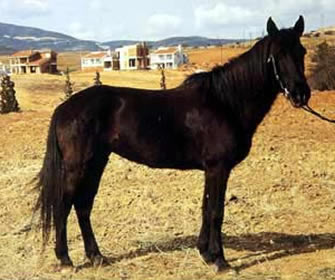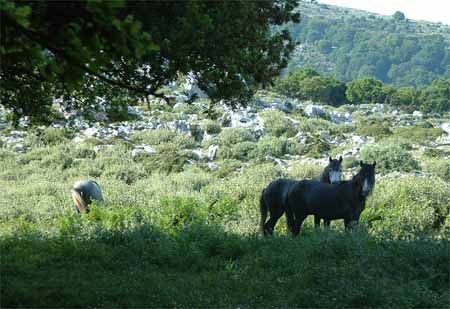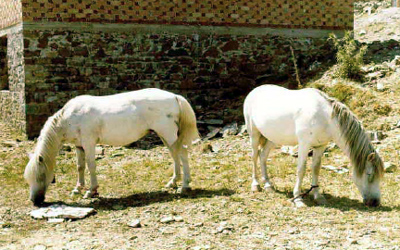



|
Pindos Qualities
Pindos horses are rather agile animals. They are also considered frugal and surefooted. Having a surefooted horse equates a very easy journey for those seeking a means to travel inexpensively with a dependable creature. They have been utilized for agriculture, pack, harness duties, and of course, riding. They can be found in Greece, Albania, Macedonia, and other areas of the Ionian Sea and Aegean Sea. Since the horses have been residing in rough areas of the world for decades at a time, they are bred to be very tough and robust.
Pindos Temperament
Pindos horses are very biddable. They have a reputation for being consistent and easy to train. At times, they may have some stubborn moments, but for the most part they are one of the easier breeds to train and keep. Sheppards utilized them for their skills and great endurance.
Pindos Appearance
The Pindos horse stands at about thirteen hands for full grown adults. They bode a plain head featuring smaller eyes and a slim neck. They have long backs, hard feet, and pronounced withers. Their eyes are extremely small considering the size of their faces, making this one of their most recognizable traits. With quarters that are not very strong, they also have a tail that is higher set, which some experts believe is a result of being some form of Oriental decent. They commonly have a spotted look to them as well. Some have a leopard appearance and almost all of these with a pattern that includes the color white. Breeders can be very particular and only select to mingle breeds that are going to make a perfect match with their prints or coats.
Pindos Upkeep
Tending to your Pindos horse is rather simple. Once trained, they are loving and simple creatures to coexist with. They can reside in various conditions and even travel long journeys without needing any rest stops. They can survive in various temperature ranges and can also handle rough terrain in long distances.
Pindos History
The Pindos horse comes from Greece, most often is the area of Thessaly. For this reason, they achieved their name of Thessalian Pony. The third century came about and it was about this time frame that Oppian, who was a Greek poet, scripted info regarding the horse. He claimed that they were “most noted for beauty, courage, and endurance”. Although some think they were used for horse breeding, they had no to do as such in a healthy manner. The horses were kept with poor soil, bad vegetation, and once the horrible weather conditions arrived, they were needed to be strong and find a method of survival. The area and lands where these creatures came from were known for being very mountainous and required only a horse that could in fact be surefooted. The Pindos is currently still held in high regard in the area of Thessaly.
|